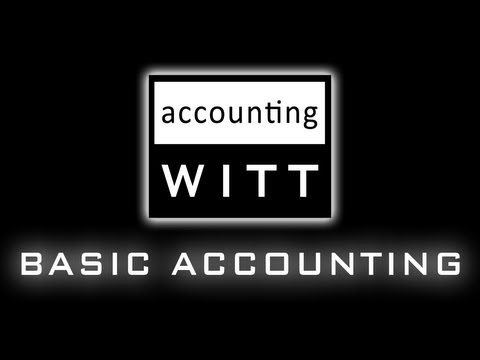4.2: The Accrual Basis and Cash Basis of Accounting
- Page ID
- 26192
In the previous section, you learned the first column of the accounting cycle. Now we will finish the remainder of the accounting cycle. The complete cycle is:
| Accounting Cycle | ||
| 1. Analyze Transactions | 5. Prepare Adjusting Journal Entries | 9. Prepare Closing Entries |
| 2. Prepare Journal Entries | 6. Post Adjusting Journal Entries | 10. Post Closing Entries |
| 3. Post journal Entries | 7. Prepare Adjusted Trial Balance | 11. Prepare Post-Closing Trial Balance |
| 4. Prepare Unadjusted Trial Balance | 8. Prepare Financial Statements | |
Before we can prepare adjusting journal entries, we need to understand a little more theory.
Revenue Recognition
Revenue is not difficult to define or measure; it is the inflow of assets from the sale of goods and services to customers, measured by the cash expected to be received from customers. However, the crucial question for the accountant is when to record a revenue. Under the revenue recognition principle, revenues should be earned and realized before they are recognized (recorded).
Matching Principle
Expense recognition is closely related to, and sometimes discussed as part of, the revenue recognition principle. The matching principle states that expenses should be recognized (recorded) as they are incurred to produce revenues. An expense is the outflow or using up of assets in the generation of revenue.
CASH VERSUS ACCRUAL BASIS ACCOUNTING
Professionals such as physicians and lawyers and some relatively small businesses may account for their revenues and expenses on a cash basis. The cash basis of accounting recognizes revenues when cash is received and recognizes expenses when cash is paid out. For example, a company could perform work in one year and not receive payment until the following year. Under the cash basis, the revenue would not be reported in the year the work was done but in the following year when the cash is actually received.
Because the cash basis of accounting does not match expenses incurred and revenues earned in the appropriate year, it does not follow Generally Accepted Accounting Principles (GAAP). The cash basis is acceptable in practice only under those circumstances when it approximates the results that a company could obtain under the accrual basis of accounting. Companies using the cash basis do not have to prepare any adjusting entries unless they discover they have made a mistake in preparing an entry during the accounting period.
| Cash Basis | Accrual Basis |
| Revenues are recognized as cash is received | Revenues are recognized as earned (goods are delivered or services are performed) |
| Expenses are recognized as cash is paid | Expenses are recognized as incurred to produce revenues |
Most companies use the accrual basis of accounting. The accrual basis of accounting recognizes revenues when earned (a product is sold or a service has been performed), regardless of when cash is received. Expenses are recognized as incurred, whether or not cash has been paid out. For instance, assume a company performs services for a customer on account. Although the company has received no cash, the revenue is recorded at the time the company performs the service. Later, when the company receives the cash, no revenue is recorded because the company has already recorded the revenue. Under the accrual basis, adjusting entries are needed to bring the accounts up to date for unrecorded economic activity that has taken place.
The following video summarizes the difference between cash and accrual basis of accounting.
Throughout the text we will use the accrual basis of accounting, which matches expenses incurred and revenues earned, because most companies use the accrual basis.
Time-Period Assumption
According to the periodicity (time periods) assumption, accountants divide an entity’s life into months or years to report its economic activities. Then, accountants attempt to prepare accurate reports on the entity’s activities for these periods. Although these time-period reports provide useful and timely financial information for investors and creditors, they may be inaccurate for some of these time periods because accountants must estimate depreciation expense and certain other adjusting entries.
Accounting reports cover relatively short periods. These time periods are usually of equal length so that statement users can make valid comparisons of a company’s performance from period to period. The length of the accounting period must be stated in the financial statements. For instance, so far, the income statements in this text were for either one month or one year. Companies that publish their financial statements, such as publicly held corporations, generally prepare monthly statements for internal management and publish financial statements quarterly and annually for external statement users.
Accrual basis and periodicity
Previously, we demonstrated that financial statements more accurately reflect the financial status and operations of a company when prepared under the accrual basis rather than the cash basis of accounting. The periodicity assumption requires preparing adjusting entries under the accrual basis. Without the periodicity assumption, a business would have only one time period running from its inception to its termination. Then, the concepts of cash basis and accrual basis accounting would be irrelevant because all revenues and all expenses would be recorded in that one time period and would not have to be assigned to artificially short periods of one year or less.
- Accounting Principles: A Business Perspective. Authored by: James Don Edwards, University of Georgia & Roger H. Hermanson, Georgia State University. Provided by: Endeavour International Corporation. Project: The Global Text Project . License: CC BY: Attribution
- Cash and Accrual - Conceptual. Authored by: AccountingWITT. Located at: www.youtube.com/watch?v=aPwdgUDXkkE. License: All Rights Reserved. License Terms: Standard YouTube License


